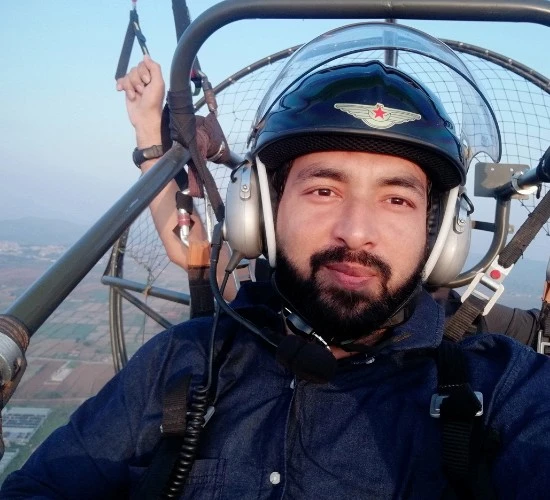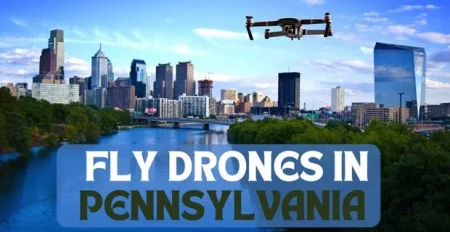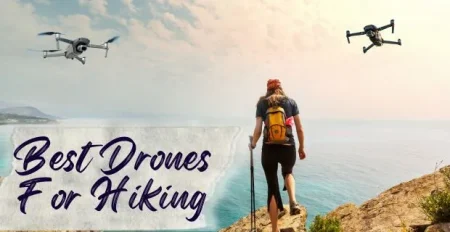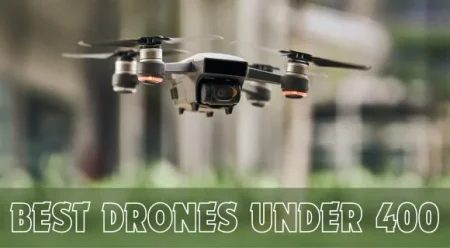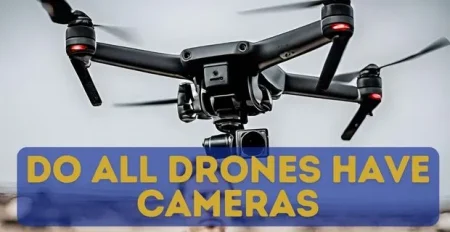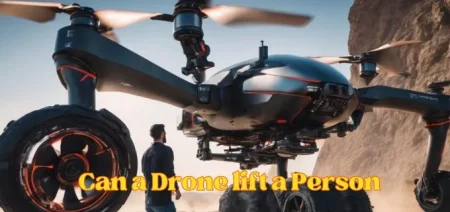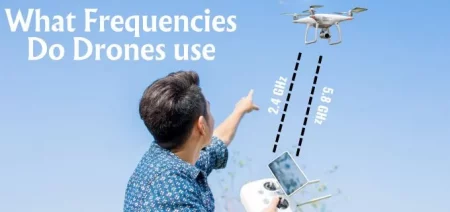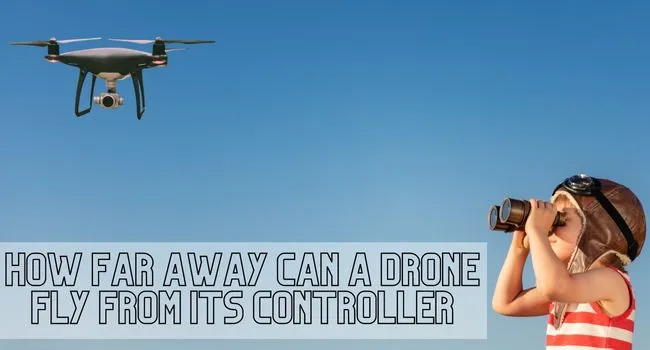
As a drone enthusiast, you’ve spent countless hours exploring the world from a bird’s eye view. You’ve captured stunning footage of sunrises, sunsets, and everything.
Have you ever pondered the maximum distance your drone can fly away from you? It’s a crucial question that all drone pilots must contemplate before launching their devices.
Whether you’re a beginner or an experienced pilot, understanding the range of your drone and its transmission system is essential for a safe and successful flight.
In this article, we’ll explore the different types of drones and their transmission systems and answer the question on every drone pilot’s mind: how far away can a drone fly from its controller?
How Far Away Can A Drone Fly From Its Controller
The drone’s flying range can vary significantly based on its type and features. Here’s an overview of the ranges you can expect from different types of drones:
Toy drones:
These are typically small and inexpensive, and they generally have a range of around 100 feet.
Small drones:
These drones are still relatively affordable but offer a significant range increase. Small drones can offer a range of 700 to 1,300 feet depending on the model.
Medium drones:
These drones are more powerful and can fly higher and farther than small drones. They can have up to 3.1 miles or 5 kilometers of range.
High-end drones:
High-end drones are typically equipped with GPS capabilities, which enable them to stay within the controller’s pre-set boundaries precisely. They can have an impressive range and fly up to 37 to 55 thousand feet.
Expensive drones:
The most expensive drones on the market can offer even more impressive ranges. For instance, DJI drones such as the Mavic Pro, Inspire 2, and Phantom 4 can transmit real-time video footage up to 4.3 miles (7 km) away.
It is crucial to note that such ranges can only be achieved under optimal circumstances. Weather conditions, obstructions, and other factors can all affect the range of your drone.
Flying within the recommended range for your drone and following best practices for flying within range will ensure safe and successful drone flying.
Related Post: How Far Can a Drone Camera See, Learn about the visual range of a Drone
Understanding Drone Controller Range
To understand the range of a drone’s controller, it’s important to define what is meant by drone controller range. The range of a drone’s controller refers to the maximum distance between the drone and the pilot’s remote control, allowing the pilot to maintain full control over the drone’s movements.
The range of a drone’s controller can vary depending on several factors, including the type of drone and controller used, weather conditions, obstructions, and battery life.
Different Types of drone controllers
Two main types of drone controllers are available: radio frequency (RF) controllers and Wi-Fi controllers.
- RF controllers have a longer range than Wi-Fi controllers, and they can transmit signals up to several kilometers away.
- On the other hand, Wi-Fi controllers have a shorter range and can only transmit signals up to a few hundred meters away.
Legal Limitations on Drone Flying Range
When flying a drone, it’s important to understand the legal limitations and regulations around flying drones beyond visual line-of-sight (BVLOS). BVLOS flying refers to flying a drone out of the pilot’s line of sight, which can affect the pilot’s ability to maintain control over the drone.
The FAA has set forth regulations for flying drones, which include restrictions on the maximum distance and altitude that drones can reach. For example, in the United States, recreational drone pilots must keep their drones below 400 feet and within their visual line of sight at all times.
Moreover, if you want to fly your drone beyond visual line-of-sight or outside of the regulations set by the FAA, you will need to obtain a special waiver or exemption from the FAA.
Factors That Affect Drone Flying Range
Several technical specifications can affect a drone’s flying range, including battery life, GPS signal, and the drone’s weight. The heavier the drone, the more power it will need to stay in the air, which can affect its range. Similarly, a weak GPS signal can also affect the drone’s ability to maintain its position and limit its range.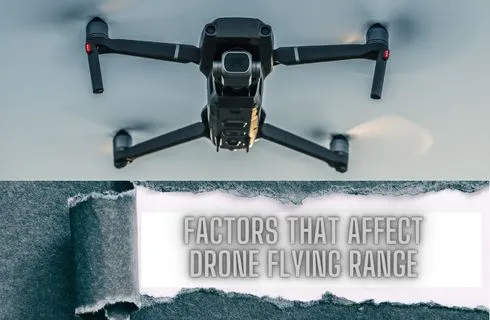
Popular drones such as DJI Mavic Air 2 and DJI Phantom 4 Pro V2.0 can fly up to 10 km and 7 km, respectively, under ideal conditions. However, factors such as wind and interference can affect the range of these drones.
Here are some potential subheadings to explain the different factors that affect drone flying range:
Drone type and capabilities:
Different drone models have varying ranges, depending on their size, weight, battery life, and motor power. Generally, larger and more expensive drones have longer ranges than smaller and cheaper ones. Additionally, some drones come equipped with GPS capabilities, which can help keep them within set boundaries set by the controller.
Transmission system:
The transmission system is what allows the drone to communicate with the controller and transmit live video. Different drones use different transmission systems, such as Wi-Fi or radio frequency. The quality and power of the transmission system can impact the drone’s range.
Weather conditions:
Adverse weather conditions can significantly affect a drone’s range, flight time, and overall performance. Factors such as high winds, rain, snow, and extreme temperatures can reduce a drone’s flight time and limit its range.
Strong winds can make it difficult for a drone to maintain a stable flight, while heavy rain or snow can damage the drone’s electronic components, affecting its ability to communicate with the controller.
Additionally, extreme temperatures can affect the battery performance, reducing the overall flight time and range. Therefore, it is crucial to consider the weather conditions before flying a drone and avoid flying in adverse weather conditions to ensure the safety and optimal performance of the drone.
Electromagnetic interference:
Electromagnetic interference (EMI) can occur when there are other electronic devices in the area that emit signals that can interfere with the drone’s transmission system. This can reduce the drone’s range and affect its ability to fly.
Obstructions and interference with signal:
Interference from obstructions such as buildings, trees, and other objects can have a detrimental effect on a drone’s signal and reduce its flight range.
Additionally, interference from other signals, such as those from Wi-Fi networks, can also affect the drone’s range.
Altitude and environmental factors:
Altitude and other environmental factors, such as humidity and air pressure, can affect a drone’s range. Higher altitudes can reduce the drone’s range due to decreased air density, while higher humidity can affect the transmission system.
By considering these factors, drone pilots can better understand how far their drone can safely and reliably fly from its controller.
Best Practices for Flying Drones within Range
To ensure safe and successful drone flying, following best practices for flying drones within their controller range is important. These include staying aware of your surroundings, using line-of-sight, avoiding flying in extreme weather conditions, and properly calibrating the drone and controller before each flight.
Maintaining line-of-sight with your drone means keeping it in your direct field of vision. You can keep track of your drone’s movements and guarantee that it remains under your command.
Additionally, it’s important to avoid flying in extreme weather conditions, such as strong winds, heavy rain, or fog, as these can affect the drone’s ability to maintain its position and interfere with the signal.
Before each flight, it’s important to properly calibrate the drone and controller to ensure that they function correctly and are in sync.
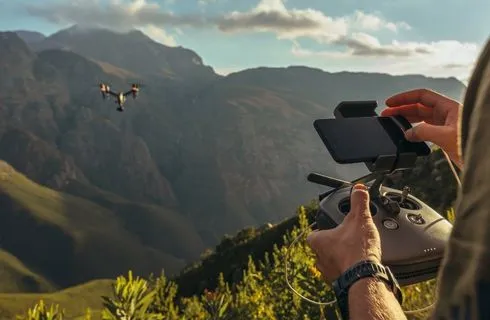
How far can a drone go without losing signal?
One of the biggest concerns for drone pilots is maintaining a strong and reliable connection between their drone and the controller.
If you’re wondering how far your drone can go before losing signal, look at the following table, which shows the range of some popular drone models.
| Drone Model | Transmission System | Max Video Transmission Distance | Max Flight Distance | Max Flight Time | Max Altitude | GPS Capabilities | Obstacle Avoidance | Price Range |
|---|---|---|---|---|---|---|---|---|
| DJI Mavic 2 Pro | OcuSync 2.0 | 8 km / 5 mi | 18 km / 11 mi | 31 minutes | 6 km / 3.7 mi | Yes | Yes | $1,599 – $1,729 |
| DJI Phantom 4 Pro | Lightbridge | 7 km / 4.3 mi | 7 km / 4.3 mi | 28 minutes | 6 km / 3.7 mi | Yes | Yes | $1,729 – $1,899 |
| DJI Inspire 2 | Lightbridge | 7 km / 4.3 mi | 7 km / 4.3 mi | 27 minutes | 5.5 km / 3.4 mi | Yes | Yes | $2,999 – $6,198 |
| Autel Robotics EVO II | Enhanced Wi-Fi | 9 km / 5.6 mi | 9 km / 5.6 mi | 40 minutes | 2.5 miles / 4 km | Yes | Yes | $1,495 – $1,995 |
| Skydio 2 | Wi-Fi | 3.5 km / 2.1 mi | 5 km / 3.1 mi | 23 minutes | 3.5 km / 2.1 mi | Yes | Yes | $999 – $1,349 |
What Happens When the Drone Gets Out of Range?
When a drone exceeds its range limit, it can lead to various outcomes. Depending on the drone and the circumstances, it may automatically return to its home point, hover in mid-air, land wherever it is, continues flying away, or even crash into an obstacle.
If the drone is equipped with GPS, the most likely scenario is that it will activate its failsafe function and return to its home point. It is often the case with higher-end consumer drones, which have built-in failsafe designed to prevent the drone from becoming lost or damaged.
In other cases, the drone may stop and hover mid-air, allowing you to move closer to the drone and regain control of the controller. However, if the drone is out of range for too long, it may eventually lose its battery charge and fall out of the sky.
Alternatively, the drone may land wherever it is, which is usually not a problem unless it flies over water or in difficult-to-reach terrain. In rare cases, the drone may continue flying away from the operator, known as a flyaway drone situation. It can happen if the operator has disabled failsafe settings or if the drone experiences a malfunction.
FAQs:
What happens when a drone flies away?
The worst-case scenario is that the drone crashes into an obstacle, which can cause damage to the drone and create a safety hazard for people and property on the ground.
When the video feed is lost, you’ll likely notice the image on your screen stutter and eventually fail completely. It is crucial to remain calm if your drone is out of range, as it should still be controllable through your commands.
Since you won’t be able to see what’s near your drone, it’s crucial to avoid flying beyond the visual line of sight. An alternative is to use the return-to-home function or manually maneuver the drone closer to yourself to restore the video feed.
As your drone approaches the limit of its controller range, there are several potential outcomes to keep in mind:
- The drone can automatically return to its home point. It is often the case with GPS-enabled drones equipped with built-in failsafe.
- The drone may hover in place, allowing you to move closer to regain control of the controller.
- The drone may land in place, which is typically fine unless you fly over water or in hard-to-reach terrain.
In rare cases, the drone may continue flying away from you, known as a flyaway drone situation. It is unlikely unless you’ve disabled failsafe settings.
What happens if a DJI drone loses signal?
If a DJI drone loses signal, it usually initiates its failsafe mechanisms to return to the home location and land safely. Following guidelines and taking necessary precautions can minimize the risk of a flyaway or collision with obstacles.
However, if the failsafe mechanism has not been properly configured or the drone loses its GPS signal, it could become disoriented and fly away or crash. It’s essential to keep your drone within your line of sight and always be aware of your drone’s signal strength and battery life to avoid accidents.
Conclusion:
The distance that a drone can fly away from its controller depends on various factors, such as the type of drone, the transmission system, weather conditions, and battery life.
However, based on the information provided in this article, we can estimate that the range for different drones varies from a few hundred feet to several miles, with some high-end models capable of flying as far as 55,000 feet.
It’s important always to fly your drone within your line of sight and keep track of its signal strength and battery life to avoid accidents or loss of control.
By understanding your drone’s limitations and taking the necessary precautions, you can safely enjoy the freedom and excitement of drone flying.
